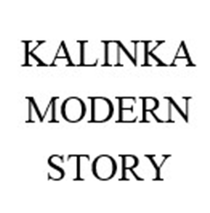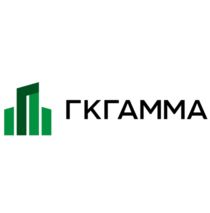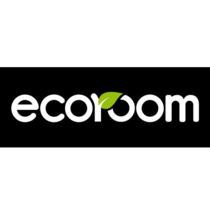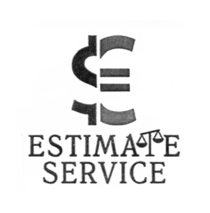intellectual property
The appearance of a product is not the least important to its successful marketing. Often it is the attractive design or packaging that determines the demand for the product and its competitiveness. To obtain a design patent, it is important to create a product that is distinctive in form, color, and combination.
An industrial design is a visual and design solution that defines only the appearance or design of a product. It can be made both by hand in small quantities (handicraft production) and in large quantities in industrial production. The scale of the activity has no effect on the protection of the subject matter of the patent.
Legal protection is granted to the design of a product in the form of photographic images, computer graphics or design projects. For example, the design of clothing, the design of shoes or bags, the appearance of packaging and printed matter, models of cars, and more are patented as industrial designs.
The main difference lies in the object of legal protection. An industrial design is not a technical solution, it refers exclusively to the appearance of the device. It determines what the product will look like in front of the consumer. A utility model, on the contrary, is responsible for the internal device, the way the mechanism works.
The criteria for patentability are somewhat different. In the case of a design it is necessary to have novelty and originality, and in the case of a utility model the presence of industrial applicability. Its registration will take less time and is much cheaper, but the term of protection of a design patent is twice as long.
A design solution of the appearance will be patented if it has the essential features of an industrial design. These include features that define the aesthetic component of the product, namely the shape, pattern (ornamentation), configuration, combination of shades and lines, texture and texture of the material.
If the technical function of the product, i.e. the purpose and fulfillment of a certain need, determines its features, it cannot be recognized as an industrial design. The main criteria by which the patentability of industrial designs is assessed are their novelty and originality.
When assessing the novelty of a product design, its appearance is compared with the appearance of objects, the data on which are available in publicly available national and world sources. In the course of determining novelty, such design elements as the contours of the design, the shape and specific arrangement of its elements, the color palette used, and the surface texture are considered. All of these details are analyzed on the basis of the images and descriptions provided by the applicant of the product to be patented. It will be recognized as new only if its essential features are different from the product for which the priority date of the industrial design has already been set, that is, it is world-known.
When assessing the originality, the creative nature of the submitted design is examined. It will only meet this criterion if it differs significantly from the registered designs or from the totality of their characteristic features.
Thus, an informed consumer should not confuse a known earlier product with a newly registered one by its essential features.
It should be borne in mind that this criterion is somewhat subjective and its analysis depends directly on the expert who reviews the application.
An industrial design will be considered unoriginal:
When determining whether a submitted design meets the patentability criteria, applications for other IP objects are also taken into account.
If you register an invention, then the legal protection will be given only to the innovative solution, which relates to the product, the method of performing the action. At the same time, the image of the appearance itself will not be protected by the state. In order to apply for a design patent, some invention developers submit 2 applications to the Patent Office:
As a result, the right holder receives protection not only for the technical solution of the product, but also for its appearance, which together enhances protection.
The following package of documents must be submitted:
When filing the application, all creators of the subject matter to be patented shall be required in the appropriate fields. The author of an industrial design is considered to be a natural person, who directly, in the course of creative process, created a specific intellectual product. A design may have several authors who participated in its creation. Persons who provided organizational, technical or material assistance shall not be included in the list of authors.
The author and the patentee may or may not be the same person. In the latter case, the author of intellectual activity does not have all the rights to it and may claim only material remuneration for his work. The amount of remuneration is determined by the contract between the applicant and the author. If there is no such agreement and there are serious disagreements - in this case the disputable situation is solved in the courts.
The amount of remuneration for designs created in the course of official activities, unless otherwise stipulated by the contract, is fixed and depends on the average salary of the employee for the last 12 months. For the creation of an industrial design, a payment of 20% of the average salary is assumed. If the applicant has given false information about the author of the product, it can bring quite serious trouble in the future. The neglected party has the right to apply for termination of the issued patent. Subsequently, if exhaustive evidence is submitted to arbitration, the patent will be revoked.
It consists of the following steps:
Formal examination determines the sufficiency and compliance of the documents submitted by the applicant, the competence of their completion and the fact of payment of fees.
If the examiner's decision is positive, then a substantive examination is carried out, in the course of which the submitted design is compared with a similar design. Such examination approves the compliance with the patentability features. If in the course of the examination the expert of Rospatent considers that the general impression of the submitted design is the same or has a sufficiently strong similarity with the patented design, the registration will be refused.
After successful completion of all administrative procedures, Rospatent makes a decision on granting a patent. It registers the design, publishes the information in the registry and issues a protection document.
Before patenting an industrial design, a preliminary search should be performed to evaluate the very possibility of obtaining a patent. A preliminary search is the collection and analysis of information concerning the design of a product. It identifies the strengths and weaknesses of the planned registration and allows the development of effective strategies for its success.
Conducting a patent search involves going through the following steps:
When classifying a development, the classes to which it can be assigned are determined. By patent and other sources of information the search for analogues is performed.
The information obtained is carefully analyzed and the compliance of the object of patenting with the current conditions of patentability is examined.
Based on the analysis, a conclusion is made as to whether the product design can be protected. In the case of a negative answer, the applicant receives recommendations on the existing options to remedy the situation.
It protects an innovative idea even before obtaining a protection document, but only after an application for a design patent has been filed. The term for consideration of the application by Rospatent is 2 weeks from the date of its receipt.
The applicant has an exclusive right to the subject matter of the patent, and can also claim compensation for unlawful use of the design by third parties, even before the patent is granted.
Such temporary protection of an industrial design helps protect the new design solution, which is especially relevant in the fashion, beauty and perfume industry, where novelties appear all the time.
To increase the level of protection of an industrial design, it is possible to register it as a volumetric trademark. In this case, intellectual property protection in such a category can have an indefinite term of protection. This is due to the fact that for trademarks the term of protection is renewed every ten years without any limitation.
In addition to the unlimited period of protection, for unlawful use of the mark, the rightsholder can hold the infringer liable and demand damages and compensation.
Produced by a national or regional (international) patent organization. A patent issued for intellectual property in Russia provides patent protection only in its territory. Other countries may use such IP object without any special restrictions.
For a broader protection of one's intellectual property one should go through the procedure of patenting in the Eurasian Patent Organization, the European Patent Office. Maximum protection is provided by patenting under the PCT system. But the latter option also has a number of limitations: it applies only to inventions and utility models and is not suitable for industrial designs. For this type of property the Hague system of patent registration is provided.
The maximum period is 25 years. To ensure legal protection of one's intellectual property, it is not enough just to patent it. It is also necessary to maintain the protection of the patent, for which it is necessary to pay the state duty every year. It should be taken into account that the patent fee is paid starting from the third year and amounts to 1 700 rubles and increases every year, and for the 25th year of validity it will be 24 000 rubles.
The fee must be paid before the previous payment deadline expires. In case of late payment, the patent holder has an additional period of 6 months to pay the money (in this case the amount of the fee increases). It is necessary to know that the state patent office does not notify about the necessity to make the annual payment and does not inform about the termination of the patent. In this respect, all responsibility lies with the patent holder himself.












Popular Services
Popular Services
Patent Bureau